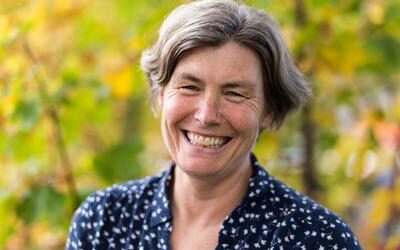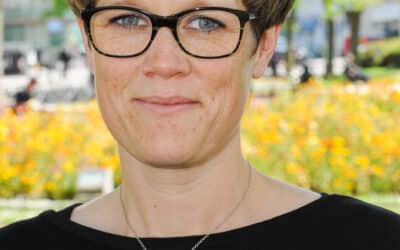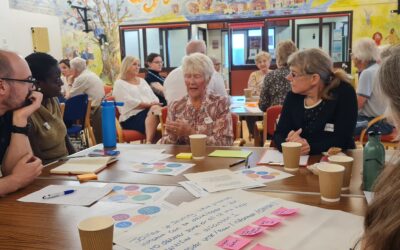Ingredients for community codesign: a venue, some flipcharts, a bowl of soup and a lot of trust
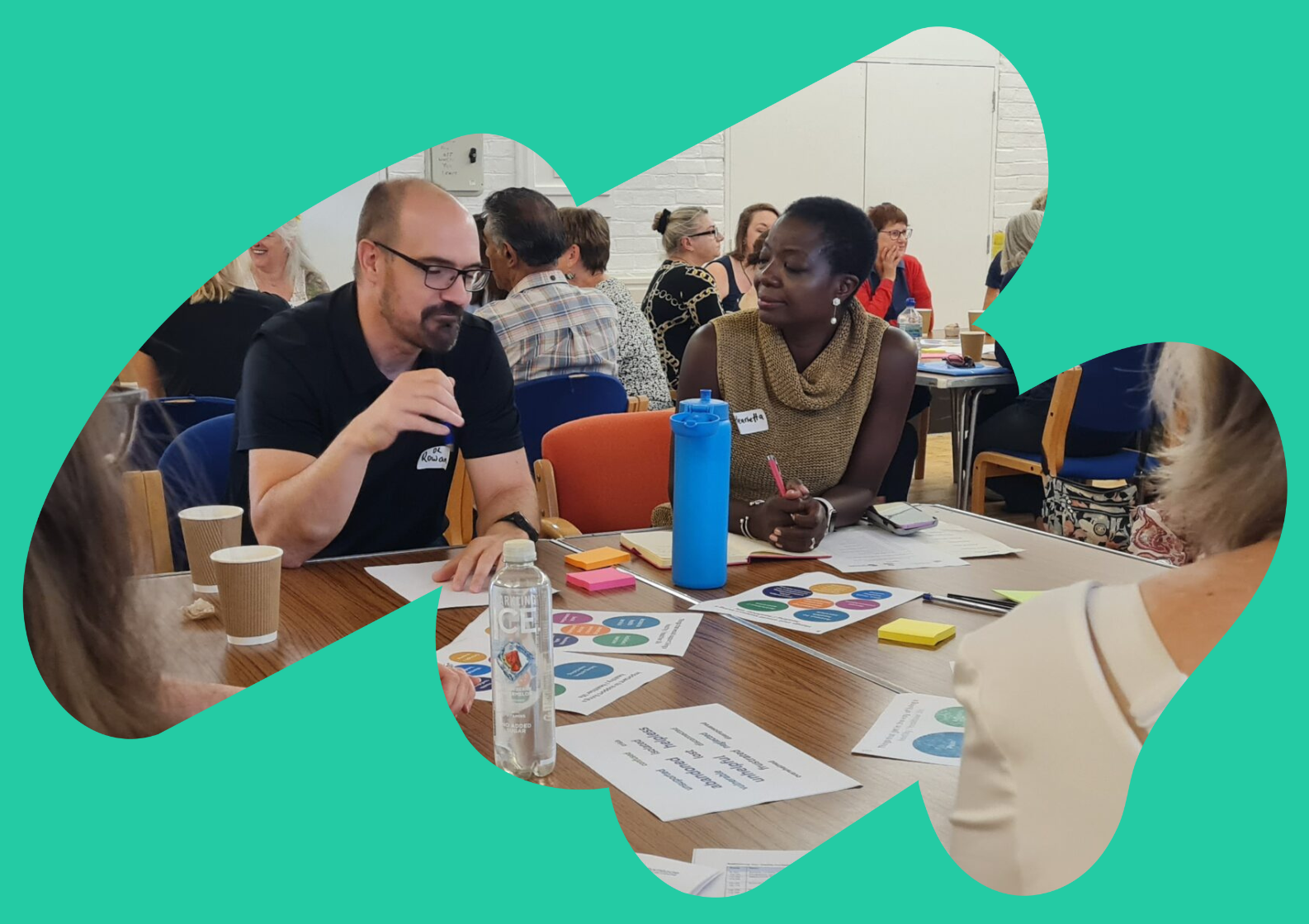
Reflections from our first Rethinking Our Health codesign workshops.
Codesign events with communities and partners
July saw an important milestone in Rethinking Our Health, with our test site partners we held community codesign events to share back the findings of the engagement phase, and to discuss practical ideas to take forward in the autumn. These will be focused on our goal of community-designed, clinically backed support for people with or at risk of osteo-arthritis, cardiovascular disease and diabetes.
A mix of lived and professional experience
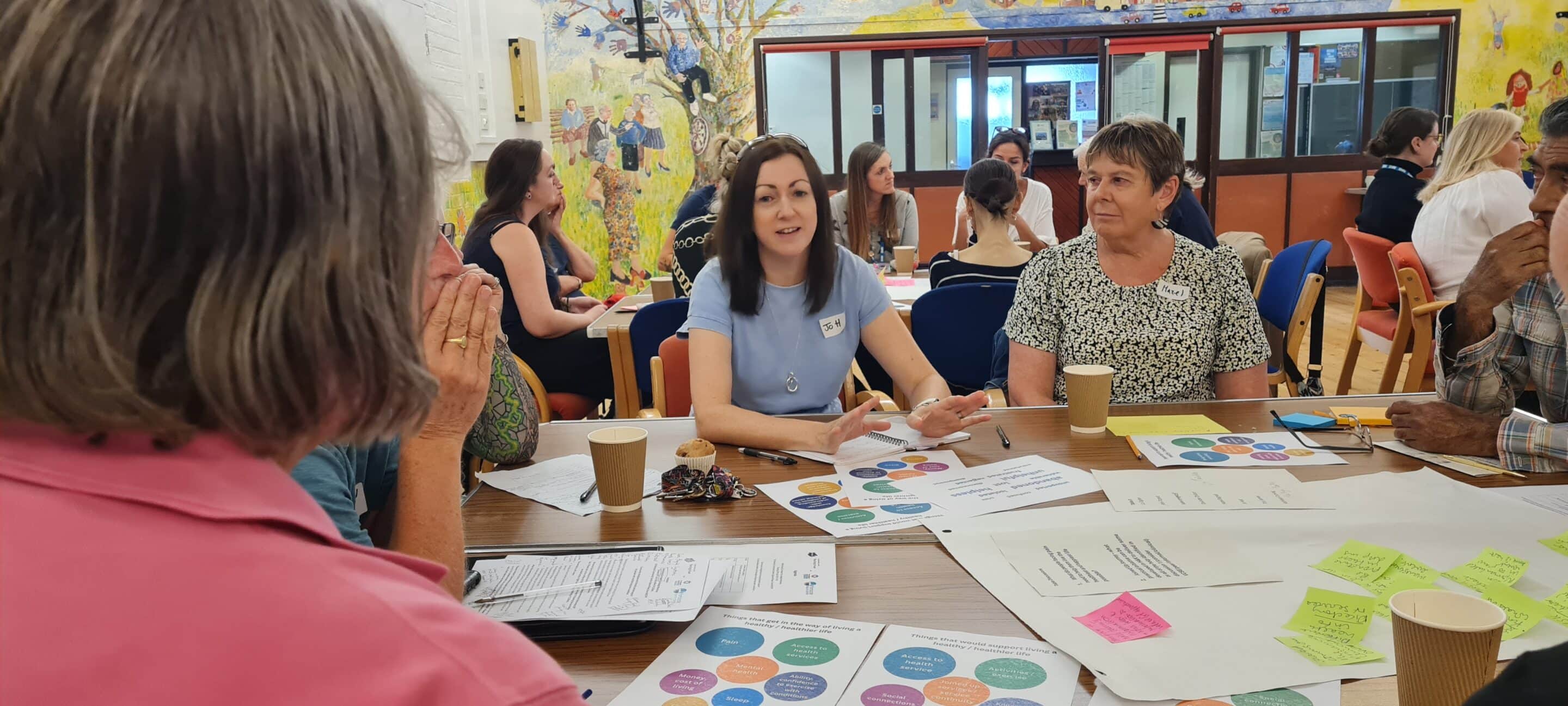
At both events we had a half and half mixture of community members and people who work in health, local government, and the voluntary community and social enterprise (VCSE) sector.
Designing the events with the community
Both events were planned with our test site partners and community members, and this is key to how they went. This meant focusing on the biggest things people told us about in the engagement phase – there were pain, access to services, understanding and confidence around your condition, practical social and financial barriers.
Two areas, two approaches
In one test site there has been a history of (and a funded infrastructure for) conversations and partnership working. Over the last ten years, many issues have been discussed, the progress both desired and created by all, the codesign event felt natural. It felt like we could ask things of each other.
In our other area leadership is more dispersed, local government takes a bigger role in leading and encouraging community health and engagement partnership working. Test site partners took a participatory appraisal approach to developing community engagement in our big question, and the pre-event work was important to building interest and confidence to take part.
Shared energy and commitment
One thing in common was that both events were buzzing with enthusiasm and commitment to neighbourhoods was clear. There is a real appetite for building on existing or previous work, ambition for better solutions and understanding that so much of this is built on relationships.
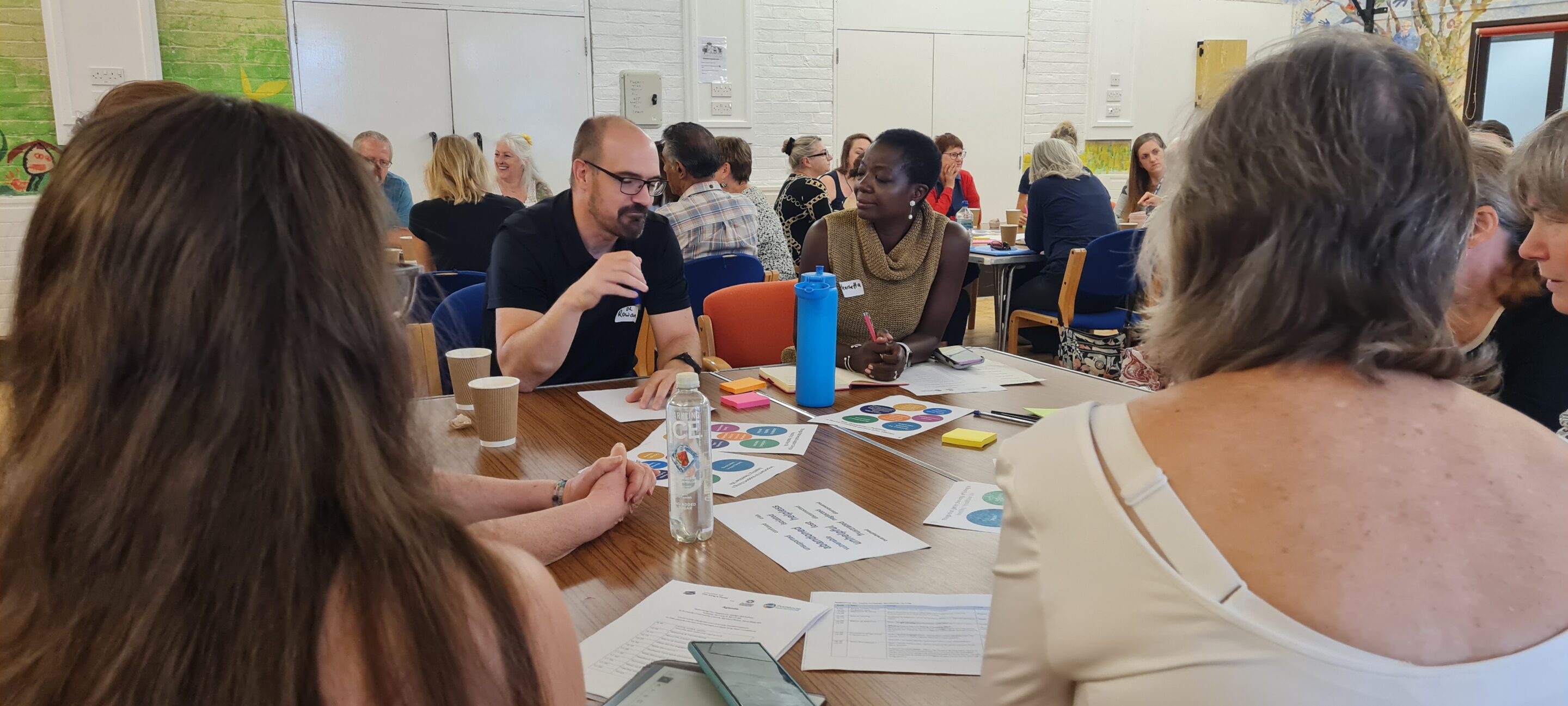
What we heard: Key themes from the codesigns
Key themes that came out of both events were
- desire for local, early, holistic support
- positive and ambitious views on the role of community and VCSE in this
- community engagement and mobilisation, patient leadership and voice is critical
- importance of being heard, and *feeling* heard – both in individual situations as well as a community
We heard a range of views about what kind of support could be given by clinicians versus non-clinicians, and creating different configurations of how community and clinician support could be offered together.
Clinical risk and collaboration
There’s an important discussion to be had about understanding and managing any clinical risk, which Here as a clinical and community-rooted organisation is well-placed to host.
Looking ahead

This way of working is how health care will be developed over the next ten years and beyond.
Dr Rowan

For now, sign up to receive an update when we publish the next blog. Want to get in touch about Rethinking Our Health? Email us: Collab@HereWeAre.org
Also of interest
Early Pain Support: Insights From our first Community Drop-In
As part of Rethinking Our Health, we hosted our first community pain drop-in — a chance for people to talk things through early, get reassurance, and feel more confident about managing pain. This blog shares what we learned, and why having the right conversation at the right time really matters.
Rethinking Our Health: starting with pain
We’ve been asking communities what really matters when they’re living with pain. In this update, we share what we heard, what surprised us, and how this learning is shaping a new three-part support offer for MSK pain that starts locally, builds on existing strengths, and is designed together.
Rethinking Pain: Insights from The Kings Fund and Here
What if pain wasn’t just something to manage, but a signal for change? The Kings Fund and Here explore how a “do with” approach can transform pain services – focusing on prevention, connection, and holistic support.
